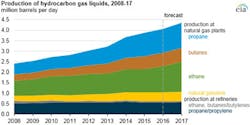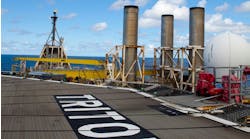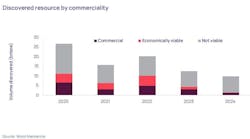UK production increases while field development declines, says EIA
Offshore staff
WASHINGTON, D.C.– After many years of decline, production of petroleum and other liquids in the UK increased by about 100,000 b/d in 2015, according to the US Energy Information Administration.
The largest contribution to this increase came from fields that were brought online in 2H 2014. Significant increases also came from fields that came online in 2015, the agency said, and from improved performance of theUK’s largest producing field, the offshore Buzzard field.
According to the EIA, a similar year-over-year increase inproduction volumes has not occurred since 1998, when petroleum and other liquids production grew by slightly more than 100,000 b/d.
The UK is the second-largest liquids producer in Europe (afterNorway), producing 1 MMb/d in 2015, the EIA continued. This amount is large among European countries but small in the global market, and the UK remains a net importer of petroleum and other liquids.
More than 97% of its liquids production in 2015 came from offshore fields. The majority of the offshore crude and condensate fields that began production in 2015 were approved in 2012 or earlier when oil prices were much higher.
In response to current low oil prices, UK producers have begun to slow plans for new development. Given the long lead times associated with offshore production, this will likely have ramifications in the two-to-five year timeframe (2018-2021).
In the UK, the number of field development plans (FDP) approved in 2015 was less than half the number approved in 2013 or 2014. Additionally, although the number of FDPs approved in 2014 was similar to the number approved in 2013, the investment associated with the fields approved in 2014 was much lower.
The current lull in both new field approvals and incremental development approvals could lead to significant production declines in the UK in 2018 and beyond. However, in 2016 and 2017, several already-approved fields where investment is already committed are expected to begin production, at least partially offsetting production declines from existing fields, the note concluded.
03/29/2016
Share your news withOffshoreat [email protected]



